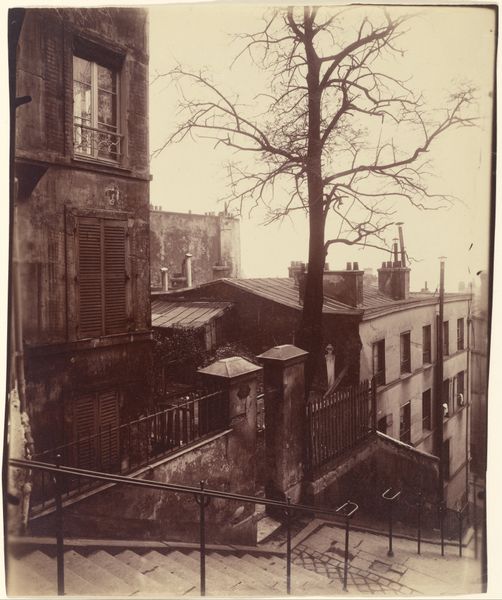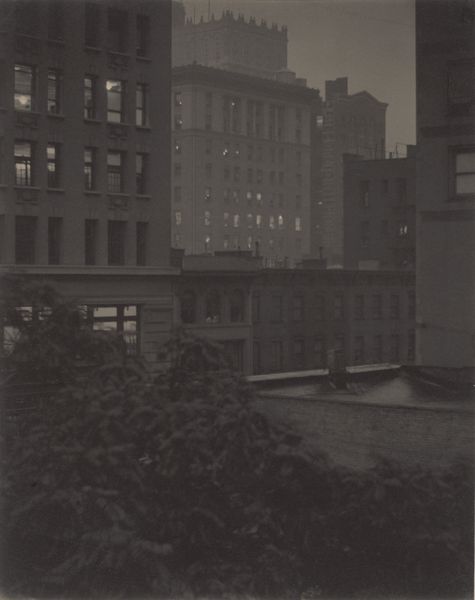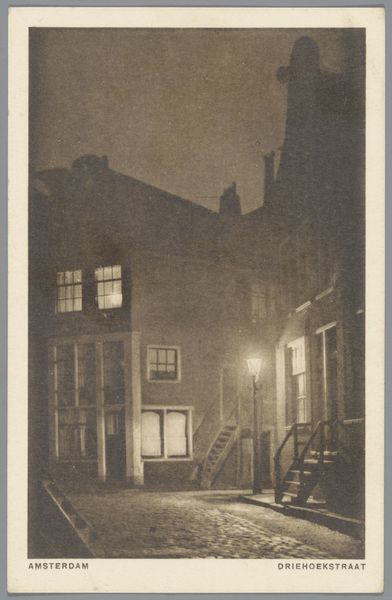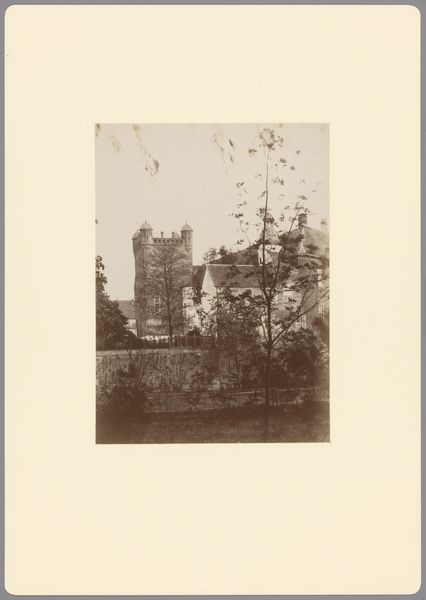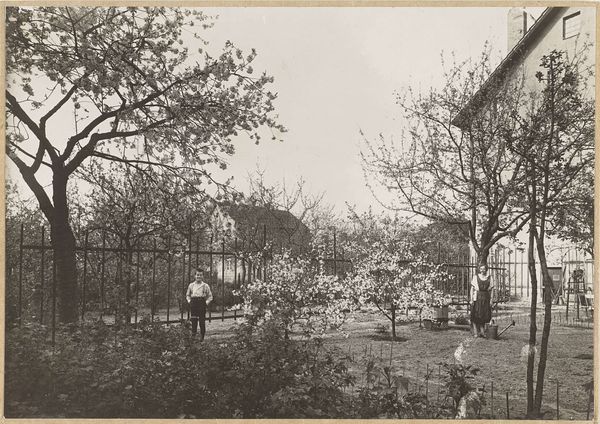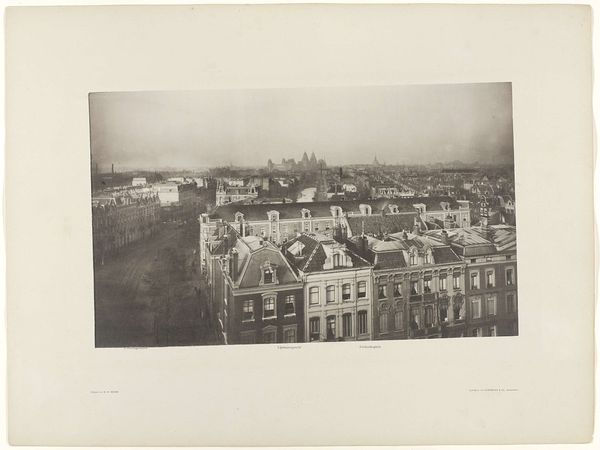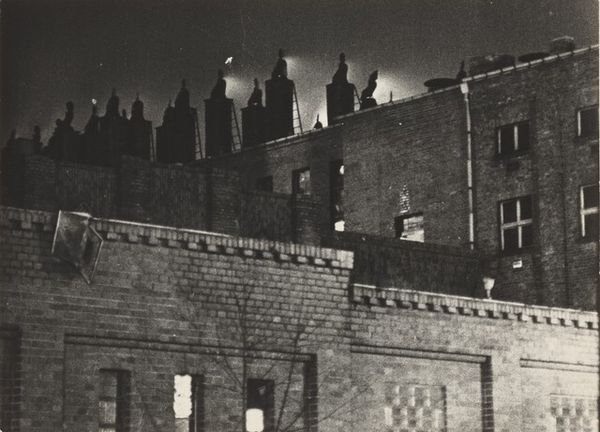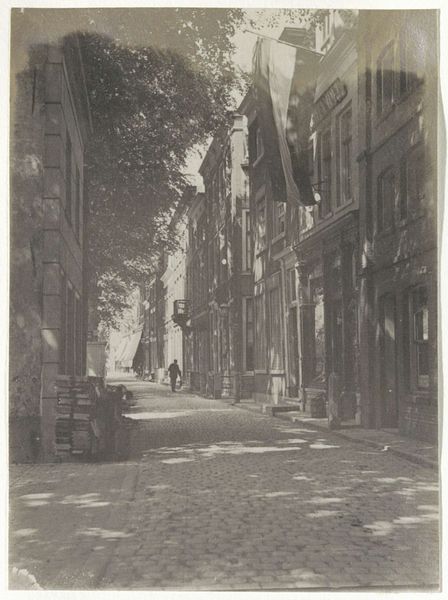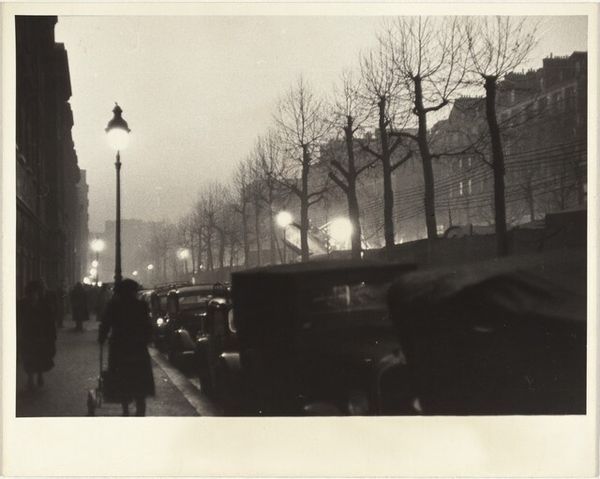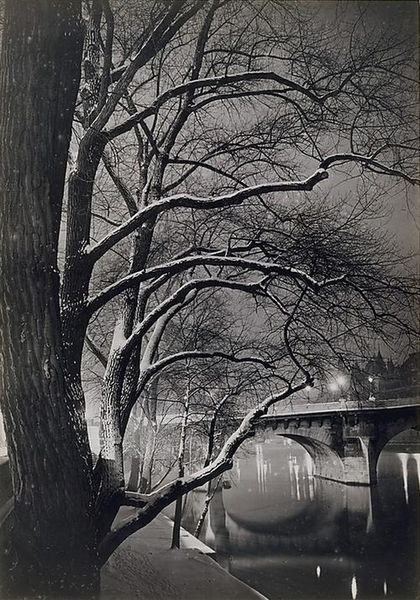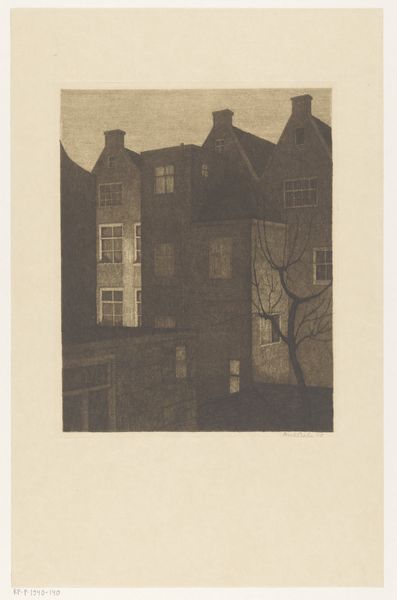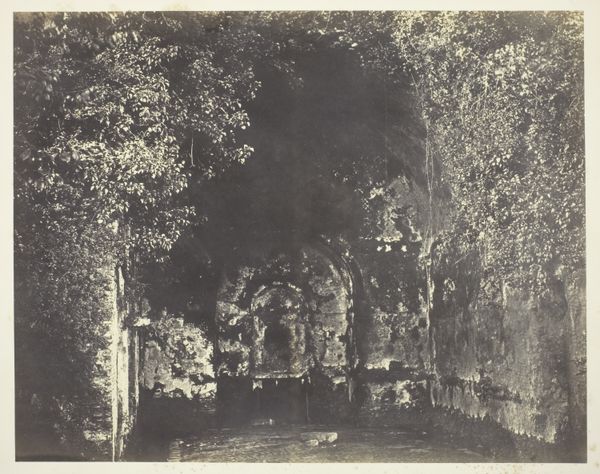
#
photo of handprinted image
#
pale palette
#
wedding photograph
#
photo restoration
# print
#
wedding photography
#
light coloured
#
couple photography
#
wedding around the world
#
celebration photography
#
shadow overcast
Dimensions: sheet: 20.2 x 25.2 cm (7 15/16 x 9 15/16 in.)
Copyright: National Gallery of Art: CC0 1.0
Editor: Robert Frank’s "Street at Night, Paris," a print from 1951, possesses an eerie, dreamlike quality. It feels quite distant, capturing a scene that’s both familiar and unsettlingly anonymous. How do you interpret this work, considering its place in the social history of photography? Curator: Frank's image resonates within the context of post-war anxieties and changing urban landscapes. Photography, especially street photography, in that era became a powerful tool for documenting social realities, often revealing alienation and a sense of detachment. Notice how the composition emphasizes the stark contrast between light and shadow, further heightening the sense of isolation. It reflects a shift away from idealized depictions of city life. Do you think the limited palette contributes to this mood? Editor: Definitely. The monochrome palette seems to emphasize the lack of vibrancy and hints at deeper feelings of social isolation and perhaps even a little urban decay. I guess I'm wondering about Frank’s intention in capturing this particular scene; what kind of story was he hoping to tell about Paris, do you think? Curator: I think he wanted to capture not the glamour typically associated with the "City of Lights" but instead to uncover a hidden reality, presenting Paris as a place where darkness and uncertainty lingered after the war. This perspective challenged prevailing visual narratives. Furthermore, by showcasing ordinary moments in an unsentimental light, Frank questioned the role of photography in shaping public perception. How do you think contemporary audiences reacted? Editor: I imagine it challenged people's expectations. It certainly wasn’t the romantic Paris of postcards. Seeing the photo today, I appreciate its stark honesty. I also recognize its commentary on how cities function – their beauty but also their capacity for social isolation. Curator: Exactly. And it prompts us to think critically about how photographic imagery can perpetuate or subvert established social and cultural narratives. It shows that art can highlight the shadows as much as the light.
Comments
No comments
Be the first to comment and join the conversation on the ultimate creative platform.
